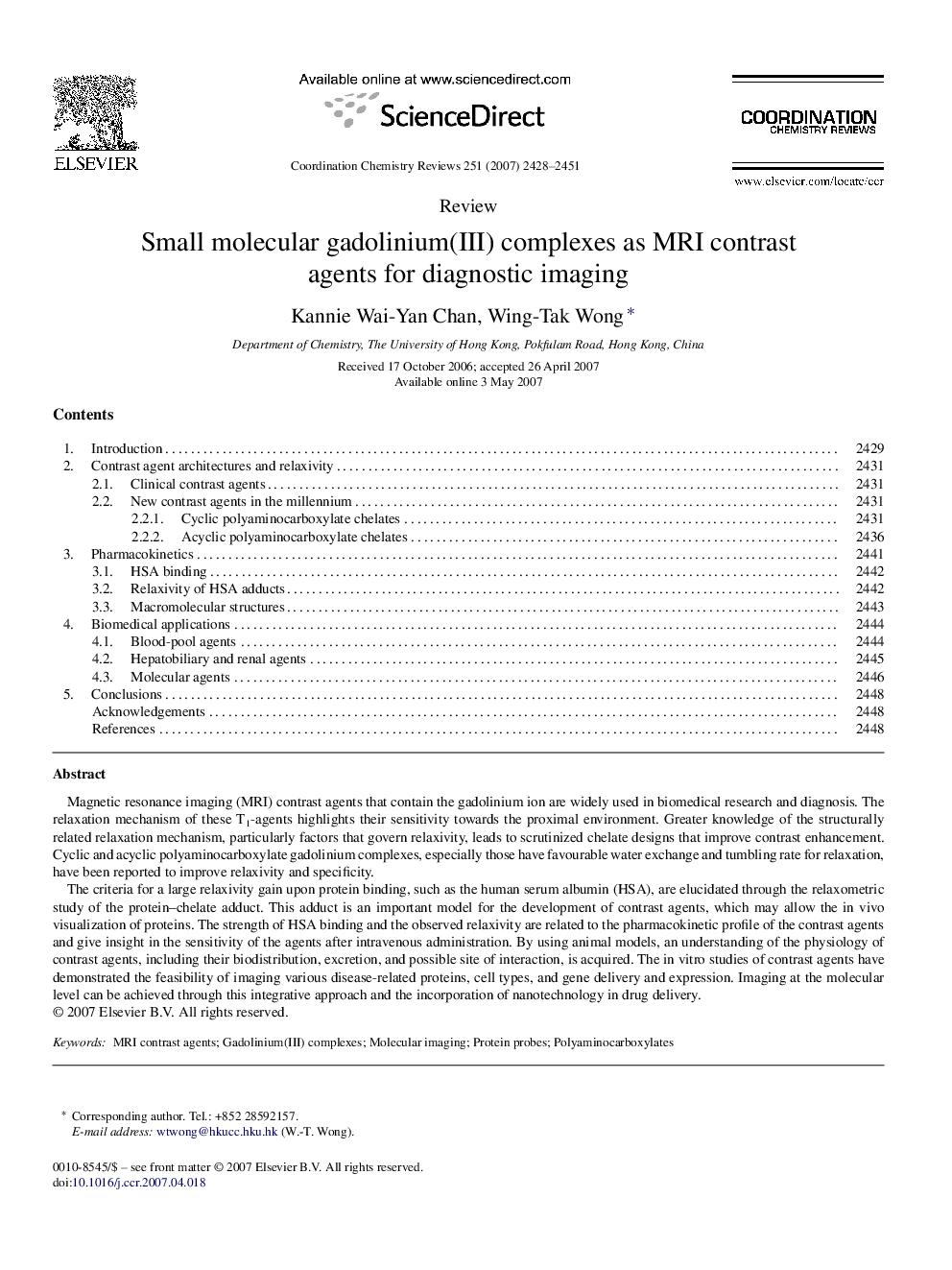| کد مقاله | کد نشریه | سال انتشار | مقاله انگلیسی | نسخه تمام متن |
|---|---|---|---|---|
| 1299533 | 1498823 | 2007 | 24 صفحه PDF | دانلود رایگان |

Magnetic resonance imaging (MRI) contrast agents that contain the gadolinium ion are widely used in biomedical research and diagnosis. The relaxation mechanism of these T1-agents highlights their sensitivity towards the proximal environment. Greater knowledge of the structurally related relaxation mechanism, particularly factors that govern relaxivity, leads to scrutinized chelate designs that improve contrast enhancement. Cyclic and acyclic polyaminocarboxylate gadolinium complexes, especially those have favourable water exchange and tumbling rate for relaxation, have been reported to improve relaxivity and specificity.The criteria for a large relaxivity gain upon protein binding, such as the human serum albumin (HSA), are elucidated through the relaxometric study of the protein–chelate adduct. This adduct is an important model for the development of contrast agents, which may allow the in vivo visualization of proteins. The strength of HSA binding and the observed relaxivity are related to the pharmacokinetic profile of the contrast agents and give insight in the sensitivity of the agents after intravenous administration. By using animal models, an understanding of the physiology of contrast agents, including their biodistribution, excretion, and possible site of interaction, is acquired. The in vitro studies of contrast agents have demonstrated the feasibility of imaging various disease-related proteins, cell types, and gene delivery and expression. Imaging at the molecular level can be achieved through this integrative approach and the incorporation of nanotechnology in drug delivery.
Journal: Coordination Chemistry Reviews - Volume 251, Issues 17–20, September 2007, Pages 2428–2451